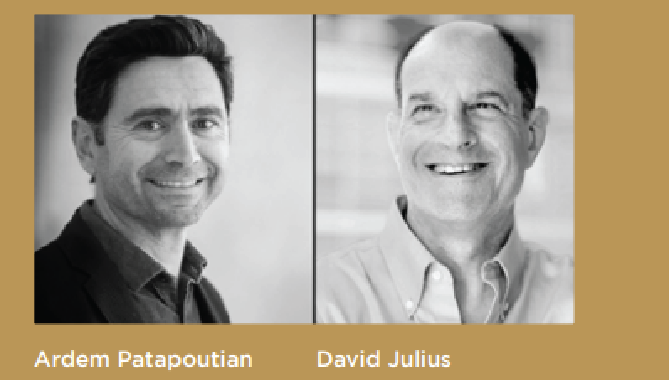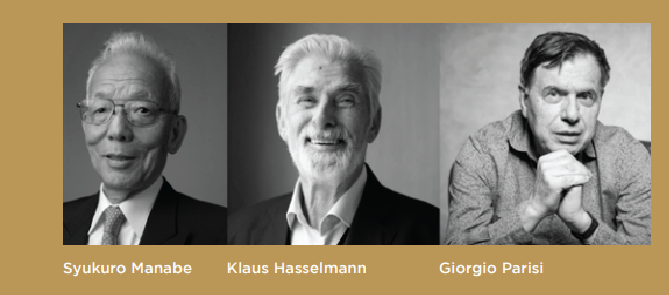Nobel Laureats, 2021 in Medicine,Physics and Chemistry .
What exactly happens when we eat something hot/spicy, say chillies? What happens when we touch something hot? Why is it that we can foretell the overall climate for the next year but err when predicting the weather for next week? How can we manufacture effective drugs economically and without too many waste byproducts in the future? Do you think that these are some disconnected series of questions? Don’t be fooled. At first glance they may appear so. But, answers to the very same questions have won the Nobel prizes for 2021. Alfred Nobel had willed that he would like to offer, “Prizes to those who, during the preceding year, have conferred the greatest benefit to humankind.” Here is a brief introduction to the pathbreaking work carried out by the recipients of 2021 in the light of Nobel’s wish.

Let us see what happens when we touch something hot, say a cup of coffee. Heat is a piece of external environmental stimuli. Our body converts this information into biological signals at the nerve cell endings of our skin. The surface of the nerve cell contains specialised molecules called Ion Channels. These open when there is an environmental stimulus and produce an electric signal. This signal is amplified and communicated to the brain, which interprets it as a sensation. Julius and Patapoutian have helped us better understand “the sense responsible for the perceptions of touch, temperature, vibration, pain and proprioception (the body’s ability to sense its movements and position in space)”.
It is a common experience that when we eat chilly, we experience a burning, painful sensation even though it is cold to touch. This is because chillies and some other plants and spices produce compounds that can irritate the palate, the lining of the stomach etc. you when you consume them in excess. However, in mild doses, they add to the taste and flavour of the food. Our nerves contain Nociceptors, particular sensory neurons that carry pain information. It has been known that chilli contains capsaicin, a chemical component, responsible for the perceived heat, as it activates the nociceptors. The mechanism by which this process occurs had remained a mystery. Julius and his group tested thousands of different proteins produced by neurons and were able to isolate one, namely, TRPV1, that responded to capsaicin and its family. The group has also isolated
protein TRMP8, which is activated by mint and gives a cooling sensation, and TRPA1, triggered by an aromatic compound in garlic. Patapoutian and his group concentrated on receptors responsible for our sense of touch. They first identified a cell that gave an electric signal when poked and went on to identify the particular receptor which was responsible. Starting with 72 candidate genes, they resorted to the elimination process and successfully identified Piezo1 and Piezo2 as the ones that respond to touch. The findings of Julius and Patapoutian will help future drug developers to target the right areas to treat inflammation, itch, pain and cold allodynia (increased sensitivity to cold temperatures).
The Nobel prizes are handed over in Stockholm on December 10, when Alfred Nobel (October 21 1833, to December 10 1896) died. The prize money depends upon the interest earned by the Nobel estate. For 2021, the prize in each category is 10 million Swedish kronor or approx. 1.1 million USD. This gets further divided if there is more than one recipient. In addition, each laureate receives a gold medal and a certificate. So far, 112 Nobel prizes in medicine have been awarded to 224 people. In physics, 115 have been given to 219 people, while in chemistry, it is 113 given to 188 people

Ninety year-old Syukuro (Suki) Manabe, as a 27-year-old physicist, brain drained to the USA from Japan in 1958, started a research project with the US Weather Service. His goal - to develop a numerical model that could be used to study the climate. Today, the same Manabe is crowned with a Nobel Prize for the same work. To solve the equations that govern the weather was an uphill task with the computers of those days. Manabe used simplifying assumptions. For example, he had to approximate how the air exchanged heat and water vapour with land, ocean and ice. He wanted to simulate how radiation and clouds interact to redistribute heat and water vapour through the atmosphere. In addition, Manabe and his team performed experiments to determine how humans have altered world climate by emmiting large amounts of greenhouse gases. In 1967, Manabe and Wetherald, “gave the first robust estimate of how much the world would warm up if carbon dioxide concentrations doubled. They estimated 2.36℃ of warming, not far off from today’s best estimate of 3℃.”
Manabe and his colleagues were able to make realistic simulations of jet streams and monsoons. Of course, these are carried out very effectively and accurately nowadays. However, they are all based on the foundation laid out by Manabe and his team. Research by Hasselman and Parisi concentrates on the influence of large-scale interactions across the globe and the chaotic behaviour of the climatic system on a day-to-day basis, i.e., the weather pattern.
Some of the weather, biological, financial systems are known to be chaotic. Here we have to expect the unexpected. A typical example is a butterfly flapping its wings in China because of a hurricane in New Mexico. Parisi is an expert in studying such systems and has shown that some order exists beneath the chaos. The theory of disordered systems studies the systems in which “different elements experience different, potentially conflicting forces that lead the element to become frustrated.” Imagine a party where A likes to chat with B, and B wants to chat with C, while C does not like to chat with A, and so on. This leads to frustration.
Parisi showed that complex systems could remember their trajectories over time and get stuck in sub-optimal states. In our example, A, B and C regularly change conversational groups and partners, hoping to find the best group to chat with, yet not seeing or being aware of it. His theory makes us understand the “beautiful emergence of coherent flight patterns within tight flocks of birds.” It has enabled scientists to include chaos in the study of climatic systems. Hasselman filled the gap between climate studies and weather prediction. According to him, “highly variable and random weather of the atmosphere gets converted into much more slowly changing signals in the ocean. These large–scale, slow changes to the oceans in turn then modulate the climate.”
For their discoveries of receptors for temperature and touch

Dr. List is a German chemist and director at the Max Planck Institute for Coal Research in Mülheim an der Ruhr, Germany. Dr MacMillan is a Scottish chemist and a professor at Princeton University, where he also headed the department of chemistry from 2010 to 2015. Ice cream tastes sweet, no doubt. In scientific terms, it is because the molecules in it fit perfectly into the particular receptors in our body. The same is true of drugs if they have to treat any illness in the body. The effectiveness of food or drug depends upon how well it matches the receptor.
Nature is peculiar. We have biological receptors on cells that receive chemical signals. These often bind only to one version of a molecule – righthanded or left-handed. It is like a lock that works with only a particular key. Evolution has taught our bodies to produce the right kind of receptors. Nature uses enzyme catalysts made up of amino acids and can assemble building blocks with the correct orientation. A difficulty arises when we try to develop drugs. The molecules come in both versions during the production, right-handed and left-handed. The handedness of the drug or the food must match that of the receptor so that the two bind each other. Otherwise, the results could be disastrous. Consider the drug thalidomide developed in the 60s to reduce morning sickness in pregnant women. The drug was a mixture of both right-handed and lefthanded molecules. One of them was effective and the other toxic. The result – foetus malformations occurred. The remedy is in Asymmetric Organocatalysis due to List and Macmillan. One can now produce a specific molecule without its mirror cousin. “In my opinion, the duo’s most important achievement was spotting something that nobody believed possible: that small organic molecules such as amino acids could also work as catalysts.” Metal catalysts can be avoided in some cases leading to pure compounds. The use of amino acids such as proline contributes to the economy of the process.
In addition, it is said that the process can take place at room temperatures. It is felt that “Organocatalysis isn’t only a cheaper alternative. It is also more environmentally friendly, typically containing common and abundant elements such as oxygen, nitrogen, sulphur or phosphorus rather than iridium or palladium.”
This year’s medical Nobel laureate, David Julius, was woken up by a text message from his sisterin-law stating, “Someone has been trying to reach you. I did not want to give him your phone number.” Well, it was the secretary of the Nobel Committee that was trying to reach him to inform him that he had won a Nobel prize. The same was the case with Ardem Patapoutian, who found out about his Nobel Prize from his 92-year-old father after the Secretary-General for the Nobel Assembly and Nobel Committee failed to reach him. Benjamin List, the chemistry prize winner, was sitting in a café with his wife, Dr. Sabine List when the call from Stockholm came. “The best ideas in science are often the ones with the least chance of succeeding,” says David MacMillan, the other winner of the chemistry prize, in this interview.
